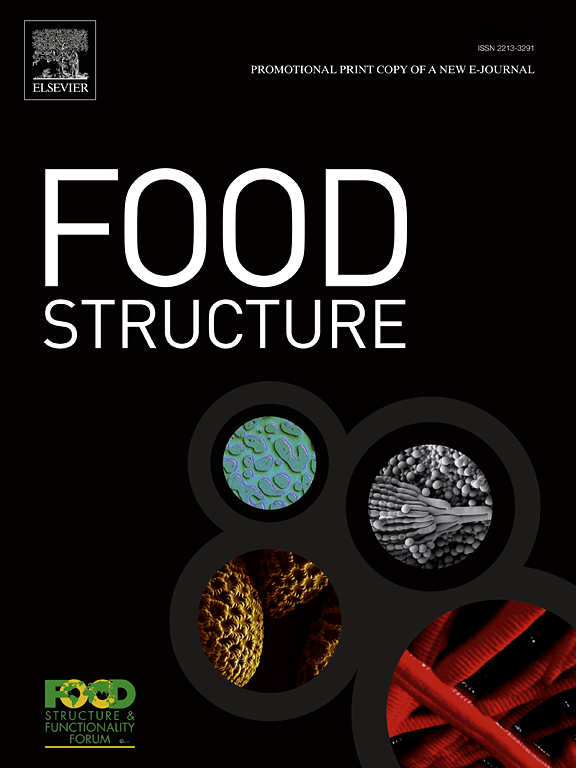使用豌豆、蚕豆和绿豆蛋白生产3d打印的肉类类似物:一项比较研究
IF 5.9
3区 农林科学
Q1 FOOD SCIENCE & TECHNOLOGY
引用次数: 0
摘要
在过去十年中,由于可持续性、营养价值、健康和成本等因素,对植物性蛋白质的需求有所增加。本研究旨在评估豌豆分离蛋白(PPI)、蚕豆分离蛋白(FPI)和绿豆分离蛋白(MPI)为基础的可食用油墨的功能、流变学和3D打印性能,以开发植物性肉类类似物。各样品的吸水吸油能力和水溶性指数差异有统计学意义(p <; 0.05)。随着蛋白质浓度的增加,所有油墨的储存模量、损失模量、屈服应力和凝胶强度都有所增加。在线性粘弹性区域内,所有样品的损失切线值都在0.21-0.27之间,表明了这些油墨的弹性行为。所有食用油墨的流动性能指数均小于1,证实了剪切减薄行为。样品的蛋白水比为1:25 .5,在打印平滑度和设计保留度方面,所有蛋白质都表现出最佳的流变特性。具体而言,绿豆蛋白基样品具有优越的弹性,剪切减薄行为,打印性能,油炸稳定性和质地性能。所有这些配方都具有满足替代蛋白质市场日益增长的需求的潜力。本文章由计算机程序翻译,如有差异,请以英文原文为准。
Production of 3D-printed meat analogues using pea, fava, and mung bean proteins: A comparison study
The demand of plant-based proteins has increased in the last decade due to several factors such as sustainability, nutritional value, health, and cost concerns. This study aims to assess the functional, rheological, and 3D printing performances of pea protein isolate (PPI), fava protein isolate (FPI), and mung bean protein isolate (MPI)-based edible inks to develop plant-based meat analogues. The water and oil absorption capacity and water solubility index of all samples were significantly different (p < 0.05). The storage modulus, loss modulus, yield stress, and gel strength increased for all inks with increasing the protein concentration. The values of loss tangent within the linear viscoelastic region were in the range of 0.21–0.27 for all samples, indicating the elastic behavior of these inks. The flow behavior index for all edible inks was less than 1, confirming the shear-thinning behavior. The sample with a protein-to-water ratio of 1:2.5, exhibited optimal rheological characteristics for all proteins in terms of printing smoothness and design retention post-processing. Specifically, the mung bean protein-based samples exhibited superior characteristics of elasticity, shear thinning behavior, printing performance, frying stability, and textural properties. All these formulations possess the potential to cater to the growing demand in the alternative proteins market.
求助全文
通过发布文献求助,成功后即可免费获取论文全文。
去求助
来源期刊

Food Structure-Netherlands
Chemical Engineering-Bioengineering
CiteScore
7.20
自引率
0.00%
发文量
48
期刊介绍:
Food Structure is the premier international forum devoted to the publication of high-quality original research on food structure. The focus of this journal is on food structure in the context of its relationship with molecular composition, processing and macroscopic properties (e.g., shelf stability, sensory properties, etc.). Manuscripts that only report qualitative findings and micrographs and that lack sound hypothesis-driven, quantitative structure-function research are not accepted. Significance of the research findings for the food science community and/or industry must also be highlighted.
 求助内容:
求助内容: 应助结果提醒方式:
应助结果提醒方式:


